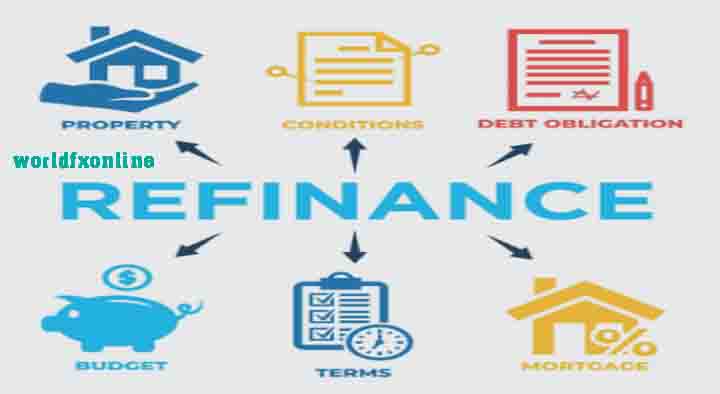Refinancing Mortgage meaning: A mortgage refinancing means replacing an existing loan with a new one, regardless of whether you change the terms, the interest rate, or the loan amount.
Refinancing can lower your mortgage interest rate, help you get lower monthly payments, and even shorten your repayment period.
A mortgage refinancing involves replacing your existing mortgage with a new loan, ideally at a lower interest rate. Refinancing involves closing costs, which can affect the financial viability of a new mortgage.
Table of Contents
What is Refinancing Mortgage
When you refinance your mortgage, you replace your existing mortgage with a new loan. New loans may have different terms.
For example, a 30-year to 15-year term or a move away from an adjustable rate to a fixed rate – but the most common change is a lower interest rate.
Refinancing allows you to reduce your monthly payments, save interest on the life of your loan, pay off your mortgage early, and withdraw cash from your home equity if you need cash for any purpose.
You May Also Like: Nissan Finance Customer Service – Nissan USA
How does Refinancing Mortgage work?
Refinancing will feel the same way when you first apply for your mortgage. A lender will review your finances to assess your risk level and determine your eligibility for the most favorable interest rate.
This is a completely new loan, and it may be different from the lender you originally worked with to buy your home.
With this new loan, you can reset the repayment clock. Suppose you have paid five years’ worth of your current 30-year mortgage. This means you have 25 years left on your debt.
If you refinance for a new 30-year loan, you will start again and you will have another 30 years to pay it off. If you refinance a new 20-year loan instead, you will repay your loan five years in advance.
Refinancing comes with closing costs, which can affect whether getting a new mortgage is financially viable for you.
These costs can range from 2 percent to 5 percent of your refinancing amount. General closing costs include discount points, an origin fee, and an assessment fee.
How to refinance a mortgage
If you are considering refinancing a mortgage, here is a step-by-step guide to the work involved.
(1): Do the math and get ready
Before you refinance your mortgage, it is important to make sure that refinancing is a financially viable option, depending on your circumstances.
Use a calculator to figure out how long it will take you to pay the refinancing costs. If this is understandable, it’s time to dig deeper into your own money:
(2): Shop for mortgage lenders
You don’t have to refinance with the same mortgage lender you got your first mortgage from, and shopping for a loan is one of the best ways to ensure you get a good deal.
Take the time to compare offers from at least three mortgage refinancing lenders. This may mean going through the pre-approval process more than once.
But the good news is that if multiple lenders check your credit in a short period of time, your score will be able to withstand multiple searches. Will not be reflected. Even better news: comparing multiple lenders can save you a lot of money.
(3): Compare rate quotes and loan terms
Interest rates are certainly a major consideration, but it takes time to review closing costs and other loan terms. For example, if an offer includes an initial payment fee.
It means that you decide to refinance at some point in the future. If one of the offers does not include an origin fee, your closing costs may be low enough to cover.
(4): Apply
Once you have settled on an offer, it is time to complete a mortgage application and provide the necessary documents including a pay stub, tax return, and bank statement.
This will be the first time you have applied for your current mortgage. When you actually apply for a refinance (as opposed to being pre-approved or pre-qualified), the lender will keep a close eye on your credit and financial situation.
You may be asked for more information because the lender also examines your application, so it is important to be prepared to answer this question to keep track of the process.
(5): Lock your interest rate
Once you are approved for your refinancing, most mortgage lenders allow you to lock in your interest rate. With the locked rate, your rate will remain the same even if the market rate increases before your loan is closed.
(However, in most cases, your rate will not decrease if the market rate falls.) Once you lock your rate, you can start planning your monthly budget because you will have a good idea of how much it will cost you. Will there be victims?
(6): Close on the loan
On the closing day, make sure your lender needs any documents and closing costs (usually with a certified or cashier’s check)Be prepared to lend unless you are taking them into debt.
Conclusion
Refinancing a Mortgage can be one of the best financial decisions you can make. If you plan to continue living in your home for a long time.
Reducing your interest rate by more than half a percent can make a huge difference in your budget. Learn more about when it’s the right time to refinance your mortgage.
You May Also Like: Business Auto Loan Bank of America

